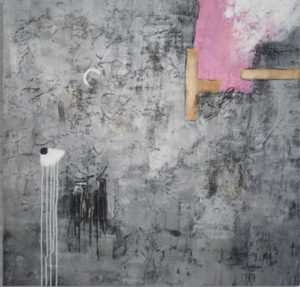Collective consciousness.
‘The dynamic relationships in a family, classroom, workplace, or grassroots movement can have an evolutionary effect, creating new ways of thinking and being. Louis Savary and Patricia Berne share how Christopher Bache, a college professor, noticed what he called “collective consciousness” emerge when he gave assignments to small groups of students. Many showed abilities “as team members” that he hadn’t witnessed before in their individual work:
Bache recognized that each of the teams in his classroom had a life of its own . . . [and] enjoyed a kind of “collective consciousness.” They were thinking as one unit and each person seemed to have access to the consciousness of the others. When someone on the team made a good suggestion, everyone on the team seemed to recognize its value, so it became easy to implement with minimal discussion, without people taking sides, pro and con.
Savary and Berne turn to Pierre Teilhard de Chardin to explain how this happens:
Teilhard’s insight [that union differentiates] revealed that each student team had become a true unity, or “union.” It had also become a new being. . . . The team as a unit was more complex than any of the individuals in the team, and their shared consciousness was richer . . . than any of the team members.
Furthermore, that new being (the Third Self, or the team, itself) allowed each member to find a fuller identity and capacity within that team. Each student was, in Teilhard’s words, “differentiating” himself [or herself]. . . . In order to contribute to the success of the team, each member was challenged by that team spirit to manifest latent abilities in themselves. . .
Love is the most powerful force or energy in the universe. That power is multiplied in relationships. Love’s potency is released most powerfully among people who have formed a relationship (a union). People who truly unite for a purpose beyond themselves become “differentiated” as they unite and work together in a shared consciousness to achieve their larger purpose.
In a true relationship, no one’s individuality is lost. It is increased. That is the beauty of Connections.
These unions that enjoy a collective consciousness become the launching pads for the next stage of evolution, as we learn consciously how to create them and use them. [2]
I see groups working creatively on many fronts, often outside church and political structures, with a growing capacity for what many call “intersectionality” (recognizing the interconnectedness of race, gender, and class). One wonderful example is the new Poor People’s Campaign led by Rev. William Barber and Rev. Liz Theoharis, and joined by people across the United States. They’re continuing Martin Luther King, Jr.’s work to dismantle racism, poverty, and war. (Learn more about the Poor People’s Campaign and how you can join below today’s meditation.) Next week we’ll explore more of the generativity and healing that can happen within such community.’
-Richard Rohr, Center for Action and Contemplations
~
The Poor People’s Campaign: A National Call for Moral Revival
Fifty years after the assassination of Martin Luther King, Jr., people around the country are taking up his mantle, challenging systemic racism, poverty, the war economy, and ecological devastation. We are compelled to stand with those on the margins. Rev. Dr. William Barber, Rev. Dr. Liz Theoharis, and organizations across the United States are mobilizing thousands to mass non-violent civil disobedience from May 13-June 21 at state capitals and in Washington, D.C.
Learn more and sign the pledge at The Poor People’s Campaign: A National Call for Moral Revival poorpeoplescampaign.org

Leave a Reply